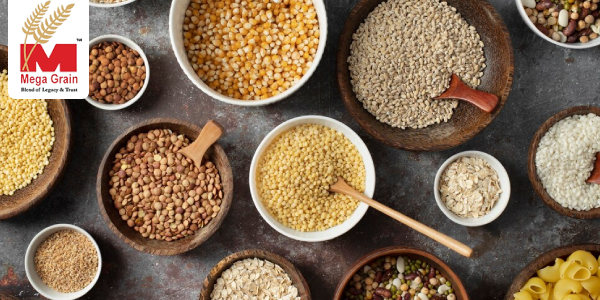
Cereals stand as nutritional powerhouses, playing a crucial role in maintaining a balanced and wholesome diet. Cereals are also a rich source of essential nutrients like fiber, vitamins, and minerals, and they are known to contribute to your overall well-being. The primary reason as to why the cereals are in demand is due to their versatility and for being a convenient dietary staple. Hence, it comes as no surprise that countries with abundant cereal produce tend to export cereals. At Mega Grain, we have an exporters based out of countries such as India, Afghanistan, Pakistan, Canada, France, Germany, Mexico, and more.
What determines the purity of the export cereals?
Processed and non-processed cereals differ significantly in their composition, nutritional content, and overall impact on health. Understanding these distinctions is crucial for making informed choices about our dietary habits.
Ingredients and Additives
- Processed Cereals: Typically contain a myriad of additives, preservatives, sweeteners, and artificial flavors to enhance taste, texture, and shelf life. These additives may include refined sugars and high-fructose corn syrup.
- Non-Processed Cereals: Consist of simple, whole ingredients without the addition of artificial additives. They retain the natural goodness of grains without unnecessary enhancements.
Nutritional Value
- Processed Cereals: They often lack essential nutrients due to the refining process, which removes key components like bran and germ. Some may be fortified with synthetic vitamins to compensate for nutrient loss.
- Non-Processed Cereals: Retain their natural nutritional profile, offering a rich source of fiber, vitamins, minerals, and antioxidants. They contribute to overall health and well-being.
Fiber Content
- Processed Cereals: Tend to have lower fiber content, as the refining process removes much of the grain’s fiber-rich components.
- Non-Processed Cereals: Are typically high in dietary fiber, aiding digestion, promoting satiety, and supporting heart health.
Processing Methods
- Processed Cereals: Undergo extensive processing, including milling, refining, and often extrusion, which can lead to the loss of beneficial nutrients and the addition of undesirable substances.
- Non-Processed Cereals: Undergo minimal processing, maintaining the integrity of the grain and preserving its natural nutritional value.
Sugar Content
- Processed Cereals: Tend to have higher sugar content, contributing to a potential spike in blood sugar levels and promoting unhealthy eating habits.
- Non-Processed Cereals: Contain naturally occurring sugars without the excess added sugars commonly found in processed alternatives.
Health Impact
- Processed Cereals: They may not be a better choice as they run the risk of negative health effects, including increased risk of obesity, diabetes, and other lifestyle-related diseases due to the presence of refined sugars and additives.
- Non-Processed Cereals: They are generally considered healthier, supporting overall well-being and providing sustained energy without the adverse health impacts associated with excessive processed foods.
In summary, the choice between processed and non-processed cereals boils down to prioritizing whole, natural ingredients over refined and artificial additives. Opting for non-processed cereals aligns with a health-conscious approach, ensuring that the nutritional benefits of grains are maximized without compromising on taste or convenience.
The Major Criteria Followed to Export Cereals
Exporting cereals involves a meticulous process governed by stringent criteria to ensure both quality and safety standards are met. Firstly, adherence to the regulations and guidelines set by the exporting and importing countries is imperative. This includes compliance with phytosanitary measures to prevent the spread of pests and diseases. Cereal exporters must provide documentation, such as a phytosanitary certificate, demonstrating that the consignment meets the specified health standards.
Quality control is paramount, and the export cereals ought to undergo rigorous testing for factors like moisture content, purity, and aflatoxin levels. The latter is particularly critical, as aflatoxins, produced by molds, can contaminate cereals and pose health risks. Stringent checks ensure that the exported cereals meet or exceed the maximum permissible limits.
Traceability is another essential criterion, requiring exporters to maintain detailed records of the cereal’s origin, processing, and transportation. This transparency aids in quick response and resolution in case of any quality or safety concerns.
Furthermore, labeling and packaging must comply with international standards, providing accurate information about the cereal’s contents and origin. Meeting these criteria not only facilitates smooth cross-border trade but also upholds the reputation of the exporting country in global markets, promoting consumer confidence in the safety and quality of exported cereals.
